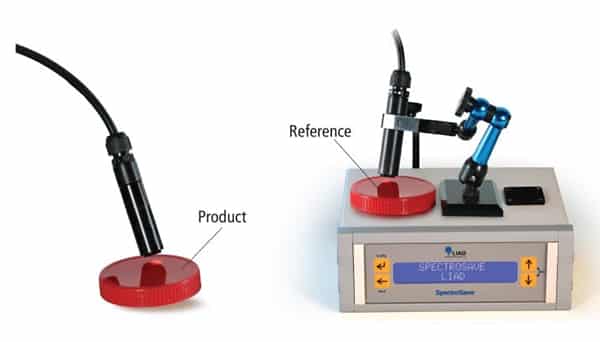
The demands placed on quality control in today’s highly competitive and cost-sensitive plastics-manufacturing market have never been greater. It’s easy to understand why. Even the slightest deviation in pigment concentration, base-material optical properties, additive quantity, or quality of the injection-molding and extrusion machines can substantially alter color shading. Unwanted variations in shading — resulting in product rejects or excessive dosing of masterbatch additives — negatively impact the bottom line. Today more than ever, QA plays a paramount role in providing manufacturers a competitive edge by helping to keep production costs low and quality levels high.
Spectral technology has been a mainstay in the arsenal of QA engineers for assuring color control for many years. But despite strides in accuracy, existing bench-top and handheld spectrometers are hindered by design limitations that impede product-line integration and raise system costs.
As these systems are highly sensitive, QA frequently takes place in laboratories away from the processing lines under the supervision of highly trained personnel, oftentimes requiring frequent recalibration, specific lighting and even physical contact with the measured part.
To address the challenges of improving quality control and minimizing rejects, while maintaining production efficiency (and minimizing the drain on masterbatch inventory), LIAD developed a versatile spectrometer that integrates within the production line and provides real-time analysis and correction of dosing quantities for nearly 100% of machine cycles. Furthermore, transmitted color, opacity, reflected color shade or haze can now be measured according to QA requirements, with easy switching between probes within the same spectrometer.

LIAD’s patented SpectroSave is a compact differential spectrometer that can be placed at the molding machine or extruder, making possible a range of high-demand and real-time QA applications. Some of the many applications include: digital setting of the pass/fail criteria, in-line testing of product color, real-time analysis of masterbatch dispensing and automatic color shade adjustment. SpectroSave can also be operated in either differential or absolute modes, enabling measurement of new-product color differences with either a reference part or coordinated L*a*b*.
SpectroSave is a single system with interchangeable probes including continuous self-calibration.
SpectroSave’s probe includes a small form factor, while the patented optical design makes the probes impervious to distance, surface texture, and lateral or angular positioning. This design also gives SpectroSave high stability and durability, demonstrated in its resistance to vibrations, varying temperatures and typical manufacturing environments. In addition, the design allows easy “plug-and-play” installation and operation, without special alignment procedures or complex calibration routines.
With SpectroSave, factories can turn their existing LIAD’s gravimetric blenders and volumetric or gravimetric feeders into “Smart Feeders”, objectively setting and altering the masterbatch dosing set point by comparing and altering the ∆E of the new product in real-time. In such a scenario, SpectroSave can even be attached to a post-production robot, enabling a fully automated solution for real-time testing and correction of additive dosing, as well as automatically discarding products that don’t meet QA requirements.
The game changing technology allows factories to speed up production, improve QA and minimize the color additive material consumption to the absolute minimum necessary; resulting in significant cost savings.
Speak directly with our engineers and find ways to reduce cost, inventory and time
Request a Demo© Copyright Ampacet Corporation. All Rights Reserved